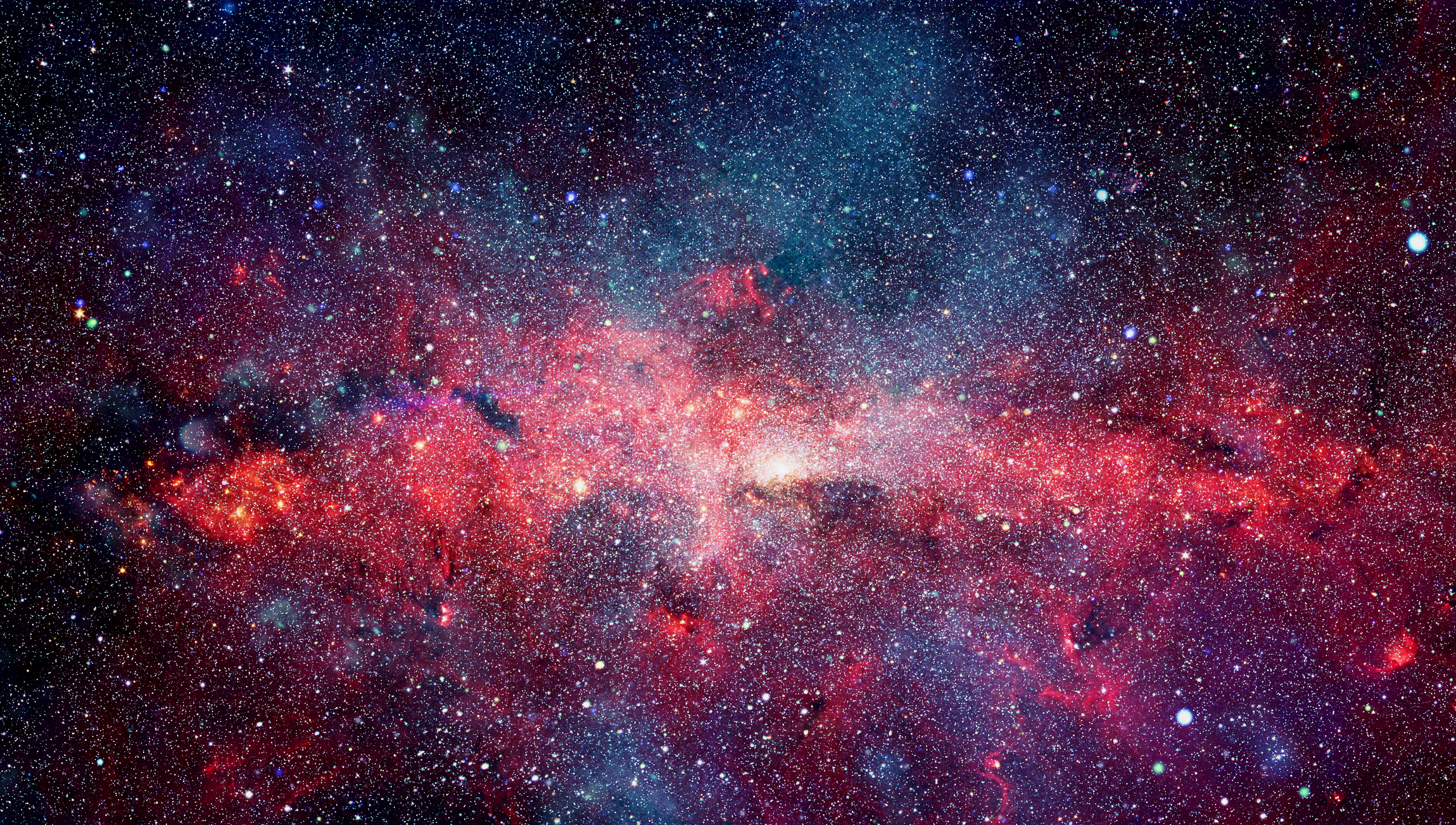Everything you need to know about black holes
The universe is actually filled with these bizarre objects. What do we know about them?

The universe is actually filled with these bizarre objects. What do we know about them? Here's everything you need to know:
How did we know black holes exist?
For decades, scientists inferred the existence of black holes by observing the otherwise inexplicable movements of celestial gases and bodies under the influence of their immense gravity. In April, astronomers used an array of radio telescopes to capture the first image of a black hole 55 million light-years away, in another galaxy. The image shows a pupil-like, black circular space ringed by a yellow-red cornea of superheated gases swirling at the edge of the black hole's reach. "We have seen what we thought was unseeable," said Shep Doeleman, an astronomer at the Harvard-Smithsonian Center for Astrophysics. Albert Einstein's general theory of relativity predicted black holes in 1915 — and created a framework for understanding them.
The Week
Escape your echo chamber. Get the facts behind the news, plus analysis from multiple perspectives.

Sign up for The Week's Free Newsletters
From our morning news briefing to a weekly Good News Newsletter, get the best of The Week delivered directly to your inbox.
From our morning news briefing to a weekly Good News Newsletter, get the best of The Week delivered directly to your inbox.
What exactly is a black hole?
It's essentially a puncture in space-time — the fabric of our universe. In Einstein's theory of relativity, time is the fourth dimension, and time and space are interconnected. Gravity isn't truly a force, but a curvature in space-time produced by mass. Think of space-time as the rubber surface of a trampoline and a black hole as a bowling ball placed on that surface. The ball causes the fabric to sag, drawing smaller objects into the depression. Since black holes are believed to have infinite density, they create bottomless pits in space-time. Astrophysicists don't know where matter that falls into them winds up.
How do they form?
The concept of a black hole was so radical, Einstein wrongly concluded this phenomenon did not exist "in the real world." But science now knows otherwise. They begin when stars exhaust their fuel. At that point, the nuclear fusion reactions that support the star's outer layers cease, and no longer prevent its huge mass from collapsing under its gravity. The star then explodes in a supernova. Afterward, if the remnant core is about three times as massive as our sun, it collapses with such force that nothing can arrest it. It becomes an infinitely dense point with no volume, or "a singularity." The gravity is so powerful it will swallow anything — including light — that crosses a boundary called the "event horizon." Approaching that boundary "is a bit like going over Niagara Falls in a canoe," said the late physicist Stephen Hawking. "If you are above the falls, you can get away if you paddle fast enough, but once you are over the edge, you are lost. There's no way back."
A free daily email with the biggest news stories of the day – and the best features from TheWeek.com
When were black holes found?
In 1971, the astronomer Charles Thomas Bolton discovered the first observational evidence of a black hole. A blue star in our Milky Way galaxy appeared to wobble, suggesting it was under the influence of a very strong gravity source that was not visible. By studying more closely, Bolton found that the star was orbiting a black hole at 200 times the speed of sound — and that black hole, Cygnus X-1, was devouring it.
How many are there?
Billions. Our galaxy, the Milky Way, is thought to contain as many as 400 billion stars. Roughly one out of every thousand is sufficiently massive that it will create a black hole after death. That would suggest 400 million black holes in our galaxy alone. A fraction of those are "supermassive black holes" a million to a billion times more massive than our sun. Most of the 2 trillion galaxies in the observable universe are believed to have such a supermassive black hole at their center. The Milky Way has one, Sagittarius A*, with about 4 million times the sun's mass crammed into a space about 30 times the diameter of the sun.
What happens at the event horizon?
Strange stuff. Consider what would happen if you fell into a black hole yourself. As you approached the black hole, you would speed up enormously and the flow of time would slow. Someone watching you approach the event horizon would never see you cross it. "You would appear to slow down, and hover just outside," Hawking said. "You would get dimmer and dimmer, and redder and redder, until you were effectively lost from sight." If you approached the black hole feet first, its gravity would pull harder on your shoes than your head, and you'd be stretched and shredded in a process that astrophysicists have dubbed "spaghettification."
What's inside a black hole?
This is a mystery. "It is really beyond the physics we know," says Juan Antonio Valiente Kroon, a mathematician at the University of London. "To understand what happens inside a black hole, we need to invent new physics." Some suggest a black hole represents a shortcut to another region of our universe — or a portal to a different one. If black holes lead to other universes, it follows the Big Bang might represent the opposite side of a black hole from another universe — spewing matter consumed there into our nascent dimension. "This might be possible," Hawking said. "The hole would need to be large, and if it was rotating, it might have a passage to another universe. But you couldn't come back to our universe. So, although I'm keen on spaceflight, I'm not going to try that."
Creating mini–black holes
Scientists at CERN in Switzerland are now trying to prove the existence of alternate dimensions using the Large Hadron Collider, or LHC. The LHC speeds up protons to about 99.99 percent the speed of light. When they collide, the energy produced could theoretically create microscopic black holes that would constitute evidence our universe is part of a "multiverse" with an infinite number of universes. That possibility has led some online conspiracy theorists to warn that CERN scientists may create micro–black holes that could grow and swallow our planet — and even our universe. But even if a micro–black hole did materialize at the LHC, scientists say, it would be so tiny and unstable that it would disintegrate immediately. "Any fears you may have concerning our planet getting eaten by a black hole are completely irrational," says astrophysicist Ethan Siegel. "The world is safe."
This article was first published in the latest issue of The Week magazine. If you want to read more like it, you can try 8 issues for only $1 here.
-
 The strangely resilient phenomenon of stowaways on planes
The strangely resilient phenomenon of stowaways on planesIn The Spotlight Lapses in security are still allowing passengers to board flights without tickets or passports
-
 Four Seasons Seoul: a fascinating blend of old and new in South Korea
Four Seasons Seoul: a fascinating blend of old and new in South KoreaThe Week Recommends Located right in the heart of the action, this classy hotel is the perfect base to explore the capital
-
 How to make the most of chestnuts
How to make the most of chestnutsThe Week Recommends These versatile nuts have way more to offer than Nat King Cole ever let on